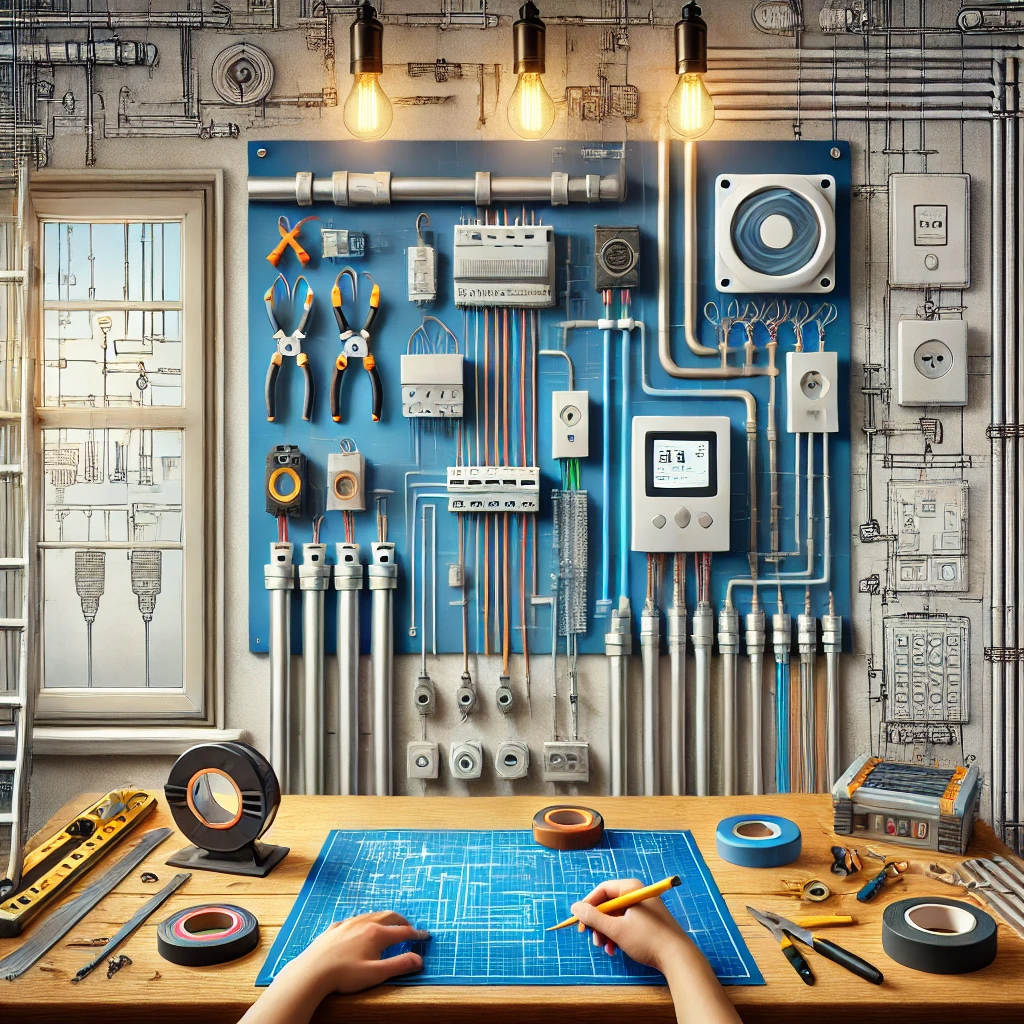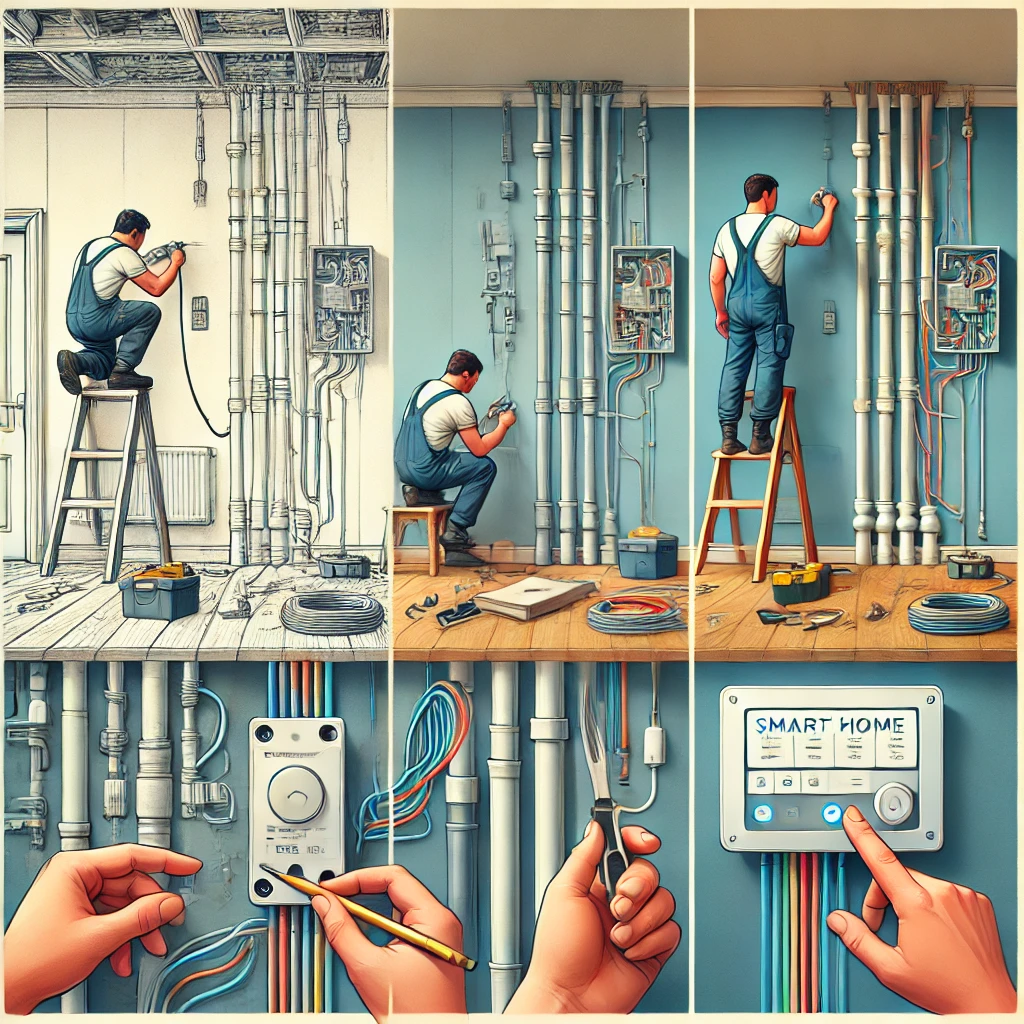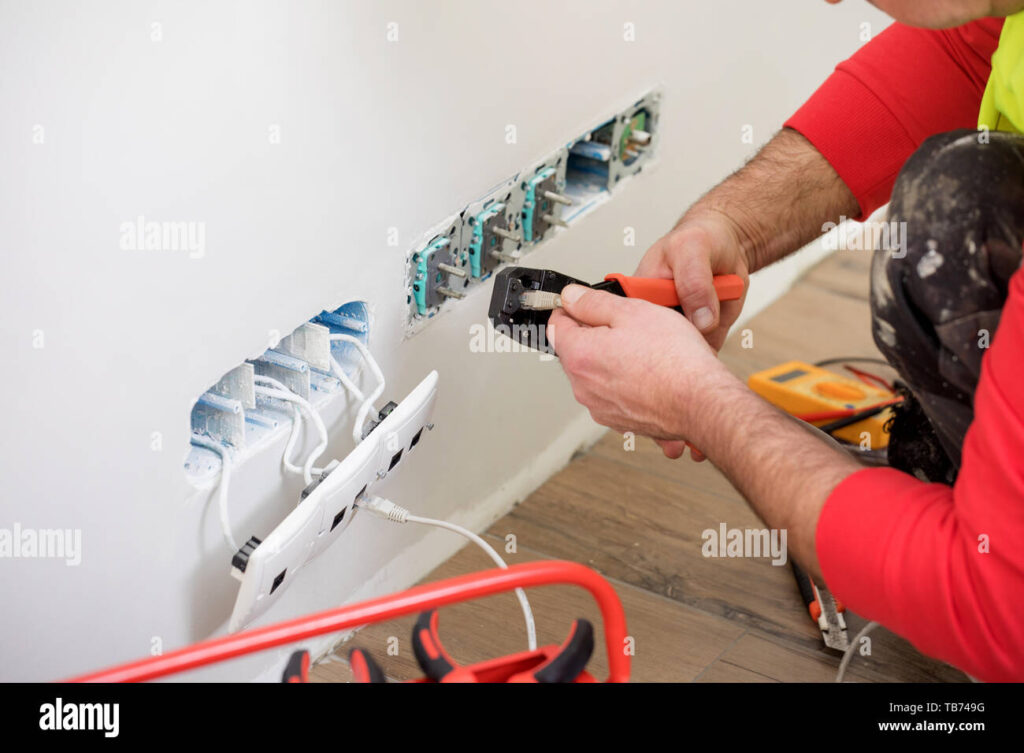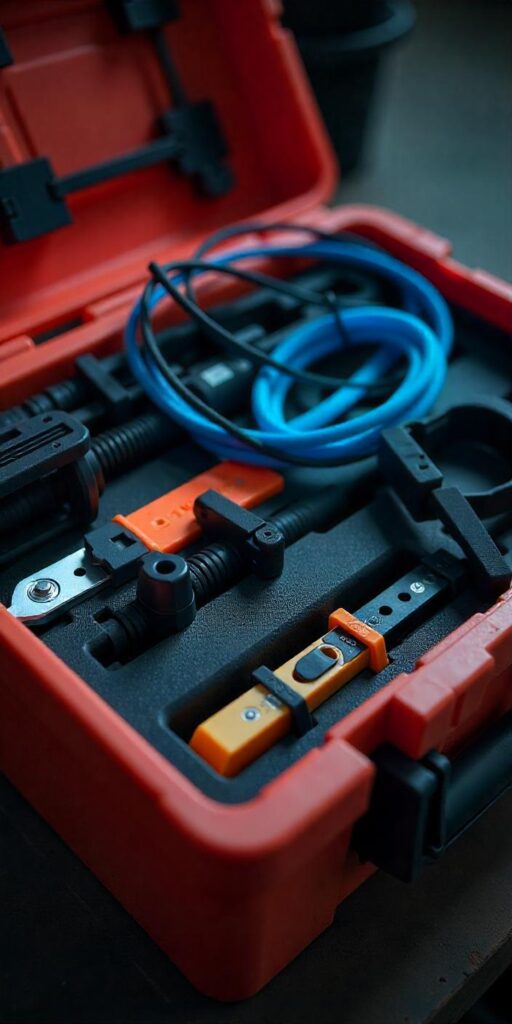
In the era of smart homes, where automation and connectivity reign supreme, the humble conduit often gets overlooked. However, these unsung heroes are the backbone of your home’s electrical infrastructure, ensuring that your devices stay powered and your space remains clutter-free. Proper conduit organization is not just about aesthetics; it’s crucial for safety, scalability, and future-proofing your home. In this guide, we’ll delve into the world of smart home conduit systems, explore recent trends, and provide a step-by-step guide to organizing your wiring like a pro.
Understanding Smart Home Conduit Systems

Conduits are essentially tubes or channels that protect and route electrical wires throughout your home. They come in various materials and types, each suited to different needs:
- Metal vs. Non-Metal: Metal conduits offer durability and are often used in commercial settings, while non-metallic (like PVC) are more common in residential settings due to their cost-effectiveness and ease of installation.
- Flexible vs. Rigid: Flexible conduits are ideal for areas where bends are necessary, while rigid conduits provide better protection against damage.
- Underground vs. Surface-mounted: Underground conduits are used for outdoor wiring, such as connecting outbuildings or EV chargers, while surface-mounted conduits are visible and often used for indoor wiring.
The benefits of using conduits are numerous:
- Safety: They protect wires from damage and reduce fire hazards.
- Scalability: Conduits make it easier to add new devices or upgrade existing systems without major renovations.
- Aesthetic Appeal: By hiding wires, conduits keep your home looking sleek and organized.
Key Trends in Smart Home Conduit Organization

As smart home technology evolves, so do the trends in conduit organization:
- Eco-Friendly Materials: There’s a growing demand for sustainable materials that are both durable and environmentally friendly.
- Integration with Smart Technologies: Conduits are being designed to support IoT devices, smart lighting systems, and even electric vehicle chargers.
- Flexible and Wireless Solutions: With the rise of wireless devices, there’s a shift towards flexible conduit solutions that can accommodate future upgrades.
- Future-Proofing with Fiber Optic-Ready Conduits: Installing conduits that can support fiber optic cables ensures your home is ready for high-speed internet upgrades.
Step-by-Step Guide to Conduit Organization
Planning Your Layout
- Use a Central Hub: Adopt a star pattern where all cables converge at a central point. This makes it easier to manage and upgrade your system.
- Map Out Current and Future Needs: Consider where you’ll place devices like TVs, security cameras, and smart speakers to ensure your conduit layout accommodates them.
Choosing the Right Materials
- PVC for Cost-Effectiveness: PVC conduits are affordable and suitable for most residential needs.
- Metal for Durability: Use metal conduits in areas prone to physical stress or where additional protection is needed.
- Fire-Resistant Materials: Ensure that materials used near heat sources or in high-risk areas meet safety standards.
Installation Tips

- Avoid Sharp Bends: Use gentle curves to prevent cable damage and ensure smooth signal transmission.
- Use Color-Coded Cables: Different colors for different types of cables (e.g., power, data, audio) make identification easier.
- Secure Conduits Properly: Use clips and ties to keep conduits in place, reducing wear and tear.
Tools and Accessories for Conduit Management

To keep your conduits organized and functional, consider these tools:
- Cable Sleeves, Clips, and Ties: These help manage cables within conduits, keeping them tidy and preventing tangles.
- Surge Protectors and Power Strips: Look for models with integrated cord management features to keep your power distribution organized.
Real-Life Examples and Case Studies

Let’s look at a couple of real-life scenarios:
- Smart Lighting System: A homeowner in New York integrated conduits to support a smart lighting system, allowing for seamless control and future upgrades without rewiring.
- Home Theater Setup: In a home theater setup, conduits were used to organize cables for speakers, projectors, and gaming consoles, ensuring a clutter-free viewing experience.
Common Challenges in Conduit Organization
Despite the benefits, there are common challenges to watch out for:
- Overcrowding Wires: Avoid packing too many cables into a single conduit, as this can lead to overheating and signal degradation.
- Difficulty in Upgrading Outdated Systems: Plan ahead by using larger conduits than initially needed, allowing for easy upgrades without major renovations.
Solutions
- Use modular components that can be easily swapped out.
- Consider hiring a professional if you’re unsure about the best approach.
FAQs About Smart Home Conduit Organization
- What is the best material for residential conduits?
- PVC is generally recommended for its cost-effectiveness and ease of installation.
- How do I plan a conduit layout for future upgrades?
- Use a central hub and ensure that your conduits are easily accessible for future modifications.
- Can I install conduits myself, or should I hire a professional?
- While DIY is possible, hiring a professional ensures compliance with safety standards and avoids costly mistakes.
- What are some cost-effective ways to organize messy cables?
- Use cable ties, clips, and sleeves to keep cables tidy without breaking the bank.
People Always Ask:
- How do you organize wires in a smart home?
- The key is to use a systematic approach, such as color-coding cables and using a central hub for easy management.
- What is the best way to hide electrical wires?
- Using conduits is one of the most effective ways to hide wires, keeping your home looking sleek and organized.
- How do you future-proof your home’s wiring?
- Future-proofing involves installing conduits that can support future upgrades, such as fiber optic cables for high-speed internet.
Conclusion
In the world of smart homes, conduit organization is more than just a nicety—it’s a necessity. By planning ahead, choosing the right materials, and using the right tools, you can ensure your home stays connected, safe, and future-proof. Whether you’re building a new home or upgrading an existing one, investing time in your conduit system will pay dividends in the long run. So, take the leap and go beyond the wires to create a smarter, more efficient living space.